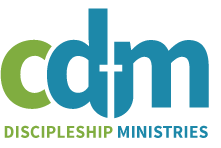![]() Here is a book that I hesitate to review. Why? Because in the limited space available I fear I will not do justice to its importance. I have challenged the author, William Edgar, to develop a leader’s guide that will encourage local church teachers and preachers to use this book.
Here is a book that I hesitate to review. Why? Because in the limited space available I fear I will not do justice to its importance. I have challenged the author, William Edgar, to develop a leader’s guide that will encourage local church teachers and preachers to use this book.
Truth In All Its Glory, Commending the Reformed Faith is a fantastic book that really does what the title communicates. I would like to go through the book summarizing each chapter; however, I will forgo that desire and simply tell you why I think this is an important and strategic book.
For those of us who are Reformed in our understanding of Christianity, we love to be known as Reformed. However, for many who do not understand the Reformed faith, it has received some bad press through the years, some of which has been justified both by the way it was communicated and by the way it has been applied.
The Reformed faith is a system that is life-oriented. It is a system built upon the truth of God’s revelation set forth in the Scriptures. It does not embrace legalism or moralism. While believing strongly in total depravity of man’s sinful nature, it also believes in God’s ability to change peoples’ lives and to do so in a way that impacts the world around us.
Edgar does an outstanding job of showing the Reformed faith in its fullest and most glorious expression of biblical Christianity. He tells of his “conversion” to his movement into the Reformed faith, not too different from mine, hence I easily identified with his pilgrimage.
At first you think you are reading the best history book on the development of the Reformed faith as you read about the history and origins of Reformation theology. As one good example, Edgar writes, “Depravity is total in that every part of our being, from the body to the mind, is sinful. We are saved neither by light of nature nor by the law of God but only because of the “glad tidings concerning the Messiah.” Edgar highlights the central doctrines and themes of Reformed theology that communicates both to those in leadership roles as well as the average person in the pew.
This book could be used to prepare an officer in the church and to help us understand who we are in the Reformed faith. It is effectively and winsomely written. It is life-oriented because Edgar has a good grasp of our world and age and how the truths of the Reformed faith touch all areas of life. While definitely understanding and appreciating things like the five points of Calvinism, known as TULIP, Edgar is quick to point out that the Reformed faith is far more comprehensive than those five doctrines. He gives special attention to the doctrines relating to salvation and their application throughout the three parts of the book.
Having spent a good part of his life both in France and Switzerland, he demonstrates not only a grasp of different cultures, but also how to communicate his case from a worldview perspective while maintaining his commitment to the Reformed faith and the Presbyterian form of church government.
You will particularly be challenged to see how the Reformed faith is to be played out in our world. Part three is entitled “Living Reformed Theology” and underscores the ultimate purpose of the Reformed faith is spiritual and practical in nature, not merely academic in tone. A much needed theme for today stresses the importance of the church in the Reformed faith. “We have stressed that according to the Reformed faith, walking with the Lord is not only individual but also communal…Accordingly, the church is the fellowship of all those who are called to live in covenant communion with the Lord.”
You will appreciate his comments on the church in a section called “Ardor and Order.” There he deals with form and function of the church and he does not dodge the difficult topic of leadership and gender. He explains the church’s purpose is threefold-worship, edification, and missions.
My favorite part of the book is the final chapter, “All the Glory of God.” In this chapter Edgar puts everything together starting with creation, the fall, and then redemption. He writes about the church and kingdom and its mandates culturally, preaching and teaching the doctrines, and administering the sacraments. In this final chapter he gives a neat and concise summary of God’s Ten Commandments.
Throughout the book and especially at the conclusion, he makes it clear that while the Reformed faith is God’s system of truth revealed in his Word, there is more work to be done in the key areas of theology. He mentions three areas in need of change: interpreting Scripture, relating union with Christ to other doctrines, and developing the doctrine of the Trinity. And those must not be done in isolation from the non-western countries especially Africa, Japan, and China. Nor must we do our theology in a cultural vacuum. For, to paraphrase Abraham Kuyper, all of life is under the sovereignty of God and that is the heart of the Reformed faith.
